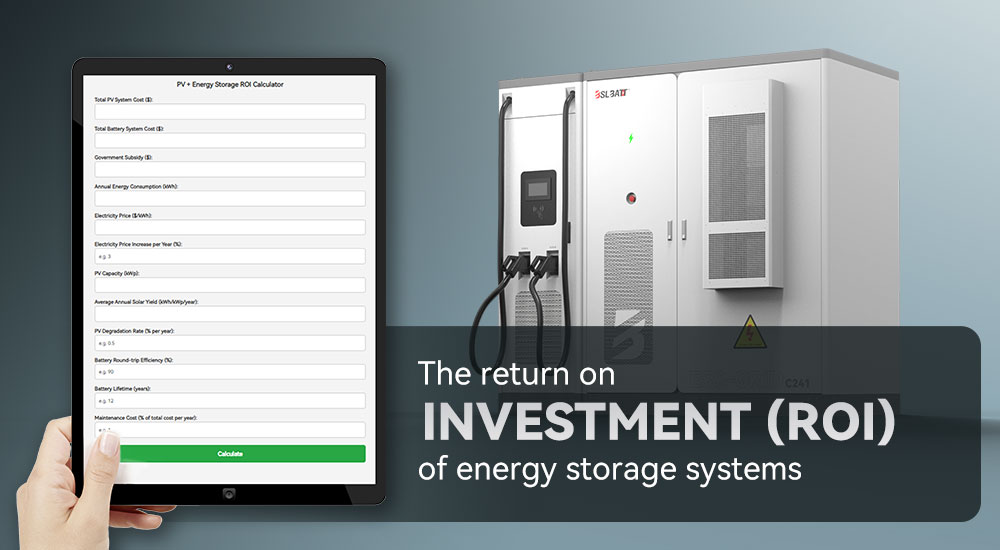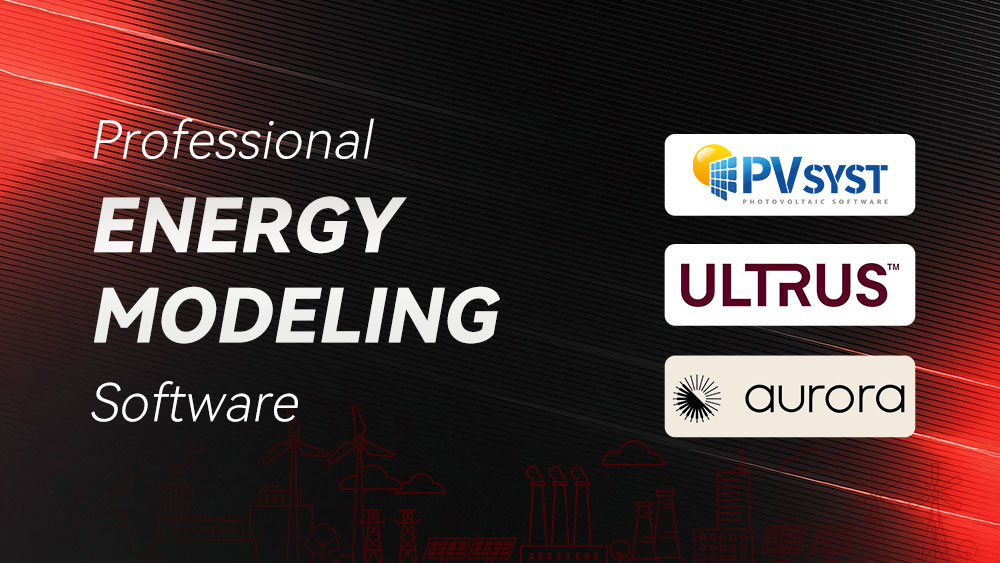AUTHOR BIO
Authored by Aydan, LiFePO4 Battery Technology Specialist at BSLBATT. With over 5 years in the advanced battery industry, He focuses on demystifying battery specifications and empowering users to make informed energy storage decisions. As an LiFePO₄ energy storage battery manufacturer, BSLBATT is committed to providing high-performance and reliable battery solutions.

As renewable energy consultants and energy storage battery manufacturers, we understand that, in addition to technical feasibility, return on investment (ROI) is a crucial consideration when evaluating solar + storage (Solar + Storage) projects for your clients. Whether a project is economically viable directly impacts your clients' investment decisions. Therefore, possessing appropriate ROI modeling tools and understanding the impact of key technical parameters are core competencies in your work.
Today, we'll discuss these powerful tools and how battery technology plays a key role in financial modeling.
Why is ROI Modeling Crucial for Solar + Storage Projects?
Solar power generation is intermittent, and the addition of energy storage systems can increase energy self-sufficiency, shift peak loads, and provide grid services, creating additional economic value. However, the initial costs of energy storage systems are often significant. Accurately calculating the relationship between these investments and future returns, and predicting the project's payback period and profitability, is precisely the purpose of ROI modeling.
Types of ROI Modeling Tools on the Market
There are a variety of tools available for evaluating these projects, which can be broadly categorized as follows:
1. Professional Energy Modeling Software:
Features: Powerful functionality and comprehensive data, capable of simulating complex grid interactions, weather patterns, battery charging and discharging strategies, and more. They often include detailed financial modules, supporting various depreciation, tax, and financing scenarios.
Technical Perspective: This type of software meticulously translates technical parameters such as battery cycle life, charge and discharge efficiency, depth of charge and discharge (DoD), energy density (which influences system design and sizing), thermal management costs, and maintenance costs into realistic operating costs and performance. For example, by importing precise battery cycle life curves, the software can predict the number of battery replacements required over the project's lifecycle, enabling more accurate long-term cost calculations.
Representative software: PVSyst (focuses on PV system design but can integrate energy storage), HOMER Energy (widely used for modeling microgrids and off-grid systems), and Aurora Solar (integrated PV and energy storage system design and financial analysis).

2. Excel Financial Model Template:
Features: Highly flexible, consultants can tailor formulas and inputs to project specifics. Many companies or industry organizations provide standard templates, or you can customize them.
Technical Perspective: You will need to manually input key battery parameters into the model. For example, in the "Annual Operating Cost" section, you may need to estimate battery degradation and potential premature replacement costs based on the expected number of cycles. In the "Energy Yield" section, the battery's charge and discharge efficiency directly impacts the final available energy, thus affecting revenue.
BSLBATT Support: BSLBATT can provide customized Excel templates or assist you in accurately integrating our LiFePO4 solar battery performance data (such as average cycle life and efficiency curves) for different application scenarios into your existing model.
3. Online ROI Calculator/Tool:
Features: Easy to use, typically requiring only a few key input parameters (such as system capacity, local electricity prices, and subsidy information) to quickly generate a preliminary ROI estimate.
Technical Perspective: These tools often use preset averages or simplified models to estimate battery performance. While fast, they may not fully reflect complex technical details and project variations. They are more suitable for preliminary project screening or providing a rough idea.
PV + Energy Storage ROI Calculator
Fill in the following data to calculate the payback period, annual savings, total savings, Net Present Value (NPV), and Internal Rate of Return (IRR) for your photovoltaic (PV) + battery energy storage system.
Results:
How do Technical Parameters Significantly Impact ROI?
Battery Life (Cycle Life & Calendar Life):
Technical Impact: Lithium-ion batteries (especially LFP) have a cycle life far exceeding that of lead-acid batteries. This means that over the life of a project, lithium-ion batteries may only need to be replaced once or even never, while lead-acid batteries may require multiple replacements, each with associated costs and system downtime.
ROI: This directly impacts a project's long-term capital expenditure (CAPEX) and operating expenditure (OPEX), and is key to calculating LCOS (Levelized Cost of Storage).
Energy Efficiency (Round-trip Efficiency):
Technical Impact: The proportion of energy lost during the battery's charge and discharge processes. For example, 90% efficiency means that for every 100 kWh charged, only 90 kWh can be output.
ROI: Higher efficiency increases the available storage capacity, which in turn increases the revenue from purchasing or selling electricity to the grid, directly increasing the project's power generation and profitability.
Depth of Discharge (DoD):
Technical Impact: While deep discharge maximizes each use, it also accelerates battery degradation.
ROI: Optimizing DoD strategies can find a balance between maximizing current revenue and extending battery life, impacting long-term LCOS performance.
Maintenance Requirements and Costs:
Technical Impact: Different battery technologies have different maintenance requirements (e.g., lead-acid batteries require fluid level checks and ventilation, while lithium-ion batteries rely primarily on BMS health management).
ROI: This is directly factored into the project's OPEX.
How Can BSLBATT Help You?
At BSLBATT, we not only provide high-quality LiFePO4 solar batteries, but we also want to be your partner in project success. We understand the importance of accurate financial modeling for project approvals. Therefore, we:
Provide Accurate Battery Performance Data: Our technical team can provide detailed battery cycle life test reports, efficiency curves, performance data under different DoDs, and other data to ensure your modeling parameters are realistic.
Assist with Customized Financial Modeling: If desired, we can provide an Excel template tailored to BSLBATT batteries based on your selected project parameters, or assist in integrating our data into your existing modeling tools.
Expert Consulting: Our energy storage experts can provide expert insights and consultation on how battery technology impacts project economics.
Summary
Choosing the right ROI modeling tool and accurately inputting relevant battery technical parameters are the cornerstones of a successful solar-plus-storage project evaluation. By combining advanced energy storage technologies (such as BSLBATT's LFP batteries) with reliable financial analysis tools, you can provide clients with more compelling project proposals and accelerate the adoption of renewable energy.
If you require a more in-depth discussion or would like detailed technical data on BSLBATT batteries for use in your ROI modeling, please feel free to contact us. Let's work together to drive clean energy project success!
Post time: Aug-13-2025








